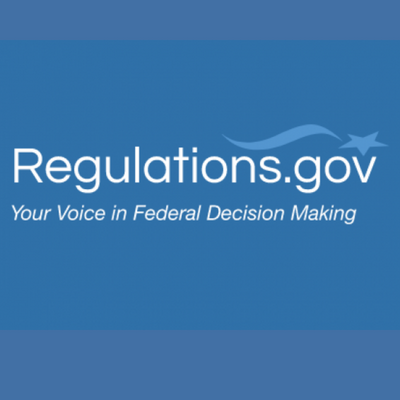Introduction
In May of 2021 the Biden Administration released the “Conserving and Restoring America the Beautiful” report, which outlined how to fulfill the President’s goal of conserving 30% of America’s lands and waters by 2030. The report also called for the creation of the American Conservation and Stewardship Atlas (the Atlas) to set a baseline for the amount of conservation already being done across the country and to track future improvement. Finally, the report outlined eight principles to follow to increase the amount of conservation in America, including honoring private property rights and supporting voluntary conservation work already done on private lands.11 U.S. Department of the Interior. “Conserving and Restoring America the Beautiful.” May 2021. https://www.doi.gov/priorities/america-the-beautiful.
The Atlas will be a powerful tool for agencies to monitor progression towards the goals outlined in America the Beautiful. It will also provide scholars, environmentalists and the public with valuable and comprehensive data to further advance the efforts of conservation. Our comment discusses how some private land conservation initiatives should be counted in the Atlas.
A core principle of effective conservation policy is additionality, which requires that conservation policy must improve upon the status quo in some measurable way.22 Mariano Mezzatesta, David A. Newburn, and Richard T. Woodward, “Additionality and the Adoption of Farm Conservation Practices,” Land Economics 89, no. 4 (2013): 722–42; “USDA ERS – Additionality in Agricultural Conservation Programs,” September 8, 2014, https://www.ers.usda.gov/amber-waves/2014/september/additionality-in-agricultural-conservation-programs/. Private lands are home to valuable conservation efforts. In counting those lands, the Administration should consider additionality. Incentives for conservation such as payments and regulatory assurances are powerful tools for getting private landowners engaged in meaningful conservation.33 Megan E. Jenkins et al., “Cooperative Conservation: Determinants of Landowner Engagement in Conserving Endangered Species,” The Center for Growth and Opportunity, November 29, 2018, https://www.thecgo.org/research/cooperative-conservation-determinants-of-landowner-engagement-in-conserving-endangered-species/. However, additionality requires that incentives should only be provided to landowners whose conservation efforts improve upon the status quo.
In this comment we examine how two promising tools for private conservation should be included in the Atlas in order to ensure additionality. First, we examine conservation easements—a powerful tool that provides financial incentives for voluntary conservation through the U.S. tax code.
The Atlas should include only those easements that provide additionality, but syndicated easements that do not provide additional conservation benefits should not be counted. We also examine how conservation banks can be improved to provide better outcomes for species conservation by increasing data availability in the Atlas.
Only conservation easements that provide additionality should be counted in the Atlas
Conservation easements are legal tools that allow landowners to donate the right to develop their property to a third party, often a nonprofit or government agency. The land is then perpetually set aside for conservation purposes, with the landowner able to claim a charitable income tax deduction for the reduced value of the land.4 John Bernstein and Brent A. Mitchell, “Land Trusts, Private Reserves and Conservation Easements in the United States,” Parks, 15:2 2005, https://www.iucn.org/backup_iucn/cmsdata.iucn.org/downloads/parks_15_2.pdf#page=50. Easements are the most common form of private land conservation, with almost 200,000 easements totaling over 32 million acres.5 “National Conservation Easement Database | NCED,” accessed February 16, 2022, https://www.conservationeasement.us/. The full cost of charitable deductions from easements was estimated by the Brookings Institute to be between $1.6 to $2.9 billion in 2016, making it one of the government’s largest conservation programs. For comparison, the National Park Service budget is about $3 billion per year.6 Adam Looney, “Estimating the Rising Cost of a Surprising Tax Shelter: The Syndicated Conservation Easement,” Brookings Institute, December 20, 2017, https://www.brookings.edu/blog/up-front/2017/12/20/estimating-the-rising-cost-of-a-surprising-tax-shelter-the-syndicated-conservation-easement/.
Conservation easements create financial incentives for private landowners to set aside their land for conservation purposes. Easements are used by governments and nonprofit groups alike. Land trusts like The Nature Conservancy use easements to protect fragile wetlands and habitat across the country.7 “TNC Lands,” The Nature Conservancy, https://www.tnclands.tnc.org/#. Unfortunately, the tax incentive structure is easily abused, allowing many easements to provide little to no conservation additionality and costing the taxpayer money.
Syndicated conservation easements are used to benefit the landowner exclusively rather than provide conservation improvements. According to a Senate Finance Committee report, syndicated easement groups function by offering people the opportunity to invest their money in a pass-through corporation. The corporation will then purchase cheap land without regard for its conservation value and hire an appraiser to greatly inflate the value of the land. Using that newly inflated value, the corporation will donate an easement to a nonprofit and claim the higher value as a tax deduction, often receiving $2 for every $1 used to purchase the land.88 “Finance Committee Releases Report on Syndicated Conservation-Easement Transactions | The United States Senate Committee on Finance,” August 2020, https://www.finance.senate.gov/chairmans-news/finance-committee-releases-report-on-syndicated-conservation-easement-transactions. According to the Brookings estimates, syndicated easements cost taxpayers between $1.9 and $2.4 billion in 2016.9 Looney, “Estimating the Rising Cost of a Surprising Tax Shelter.”
The Atlas should not count syndicated easements toward conservation because they provide little to no additionality. Going forward, the Administration should include the Internal Revenue
Service in its discussions on what to include in the Atlas. The IRS has already begun to identify and audit dozens of syndicated easement dealers and this information would be helpful in establishing the Atlas.10 “Finance Committee Releases Report on Syndicated Conservation-Easement Transactions | The United States Senate Committee on Finance.” Easements that were created by syndicated groups should not be considered a conservation effort and should not be included in the Atlas.
When it comes to non-syndicated easements, the Administration could establish some criteria to ensure only easements that lead to additional conservation benefits are being counted in the Atlas. Several options for doing so include:
- Establish requirements for minimum conservation management practices required for an easement to be included in the These could include minimum deed rules like the ones already established in other federal programs like the Agricultural Conservation Easement Program (ACEP), which could be used as a model.11 “ACEP-ALE Minimum Deed Terms,” FIC (blog), https://farmlandinfo.org/sample_documents/acep-ale-minimum-deed-terms/.
- Review easements created exclusively under the “open space” provision This provision allows easements to qualify for tax deductions if they conserve open space “for the scenic enjoyment of the general public.” Although the preservation of open space is important, this definition does not move the Administration forward in its America the Beautiful initiative. A better definition may require that the open space also provide habitat for wildlife or result in another specific and measurable environmental benefit.
Make conservation banking data more accessible to promote transparency and evaluation
Conservation banks are market-based tools that allow developers to fulfill compensatory mitigation requirements under the Endangered Species Act. To make up for damage done to the habitat of an endangered species, a developer purchases credits from a bank whose habitat hosts that species. The bank functions as a conservation easement once all the credits have been sold. Conservation banks were authorized at the federal level in 2003 and are a relatively new tool with 130 banks conserving 160,000 acres of land.12 “For Landowners | Conservation Banking,” Fish and Wildlife Service, accessed August 10, 2021, https://www.fws.gov/endangered/landowners/conservation-banking.html. Since conservation banking has not been around long, data on the success and additionality of banking is difficult to find, with academics studying the subject often pointing to the lack of information as an issue.13 Maria Jose Carreras Gamarra and Theodore P. Toombs, “Thirty Years of Species Conservation Banking in the U.S.: Comparing Policy to Practice,” Biological Conservation 214 (October 2017): 6–12, https://www.sciencedirect.com/science/article/abs/pii/S0006320716310060?via%3Dihub; Jessica Fox and Anamaria Nino- Murcia, “Status of Species Conservation Banking in the United States,” Conservation Biology 19 (August 2005): 997.
The current federal database on compensatory mitigation, the Regulatory In-Lieu Fee and Bank Information Tracking System (RIBITS), functions mostly as a ledger tracking how many credits conservation banks have left to sell. It provides little information, however, on the conservation value of specific banks. The database shows that bank profiles include contact information, species protected, and available and total credits. Often lacking, however, is any data on the number of species, quality of habitat, or cost of credits. Much of this information is likely recorded in conservation banking agreements, but many agreements that should be in the RIBITS database are missing. Without better access to this data it is difficult for government agencies, academics, and conservationists to analyze the effectiveness of conservation banking.
Not all conservation banking credits are created equal—one may represent land managed for species occupancy, while another may represent land of lower quality for the species in question. Many banks are made up of restored habitat that was once developed or negatively affected by humans in some way but was later restored. While restoration is a noble pursuit, the literature is mixed on whether the new habitat provides the same value as undeveloped habitat.14 Shelley Burgin, “‘Mitigation Banks’ for Wetland Conservation: A Major Success or an Unmitigated Disaster?,” Wetlands Ecology and Management 18, no. 1 (February 1, 2010): 49–55, https://doi.org/10.1007/s11273-009-9147-5; J. Grant McKown et al., “Successional Dynamics of a 35 Year Old Freshwater Mitigation Wetland in Southeastern New Hampshire,” PLOS ONE 16, no. 5 (May 17, 2021), https://doi.org/10.1371/journal.pone.0251748. Mitigation banks, which conserve wetlands in a similar way to conservation banks, attempt to alleviate this problem by using a ratio system that values restored lands less than preserved wilderness.15 “Assessment Tools for All USACE Districts,” U.S. Army Corp of Engineers, https://ribits.ops.usace.army.mil/ords/f?p=107:27:13950053683775::NO::P27_BUTTON_KEY:20.
The ratio system categorizes mitigation bank lands into three categories of habitat quality restored, enhanced and preserved. Developers impacting high value habitat must purchase more restored or enhanced bank credits per acre than preserved credits to meet the mitigation requirements. If a similar ratio system is applied to conservation banks, this information is not publicly available.
A 2021 prerule called on the Department of the Interior to review its conservation banking guidelines by January 1, 2022, which would include the ratio system. As of March 2022, however, the prerule has not been acted on. The Administration should push the Department of the Interior to review its rules regarding banking and fulfill the prerule, as well as make the information publicly available in the Atlas.
Conservation banks should be included in the Atlas, but the Administration should reevaluate what types of information it includes for conservation banks and expand what is publicly available. Helpful information for studying the additionality of banks would include:
- information on the price of credits for each individual bank and species;
- whether the land is restored, enhanced, or preserved;
- any information on the presence of the species;
- the ratio that was used for each credit
Including this information would better enable government agencies and academics to study the additionality and benefits of banking. Greater transparency would also allow conservation banking to grow as a valuable tool that creates financial incentives for meaningful species conservation.
Conclusion
Private lands are an increasingly important conservation tool and should be included in the Atlas. Millions of acres of valuable land have been conserved in private hands and the vast majority of endangered species rely on private land for their habitat.1616 Jodi Hilty and Adina M. Merenlender, “Studying Biodiversity on Private Lands,” Conservation Biology 17, no. 1 (2003): 132–37, https://doi.org/10.1046/j.1523-1739.2003.01361.x. The Atlas will be a valuable tool for understanding and measuring the progress of conservation efforts, but the Administration should take care only to include private lands that improve the status quo and result in meaningful environmental benefits.



 Regulations.gov
Regulations.gov